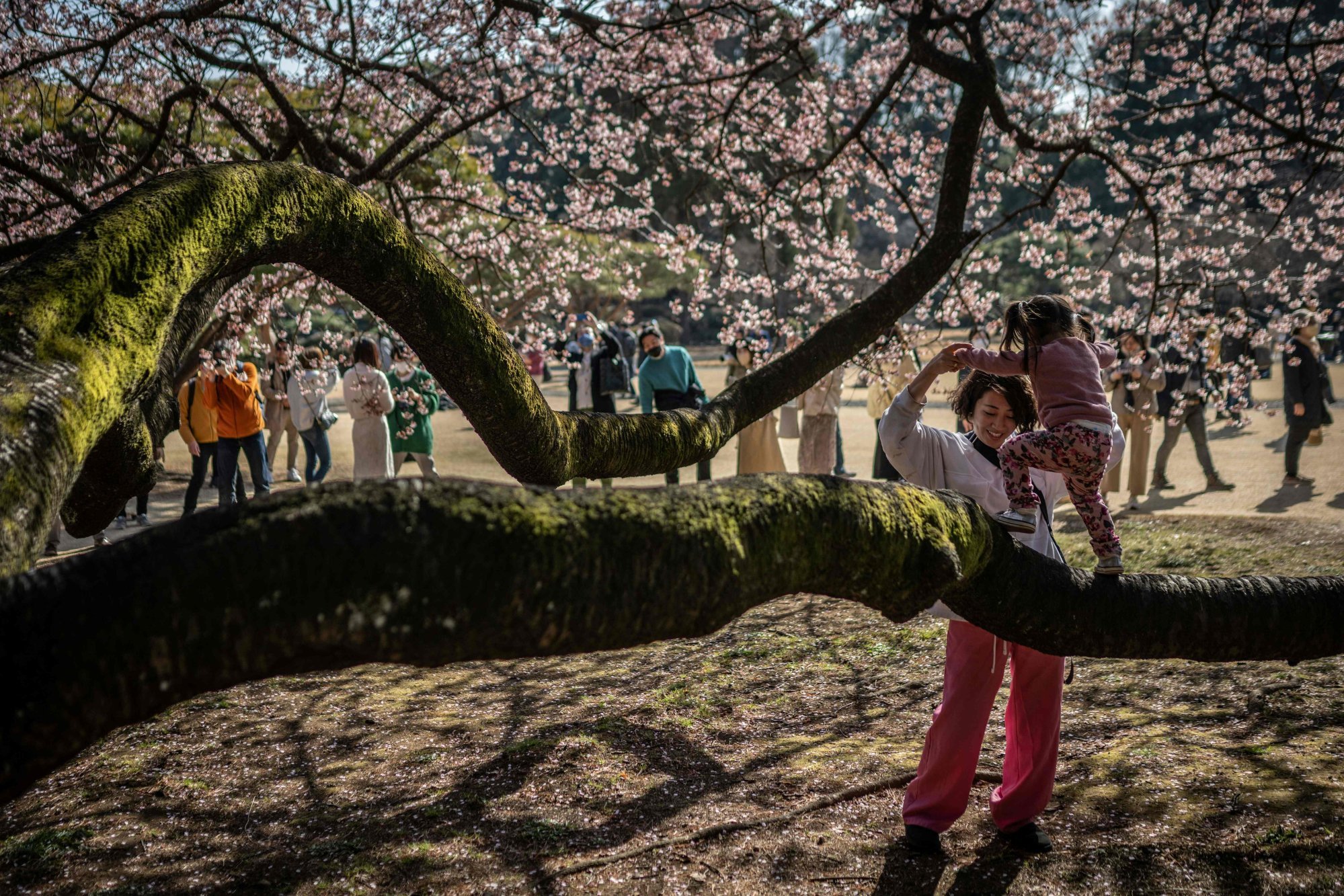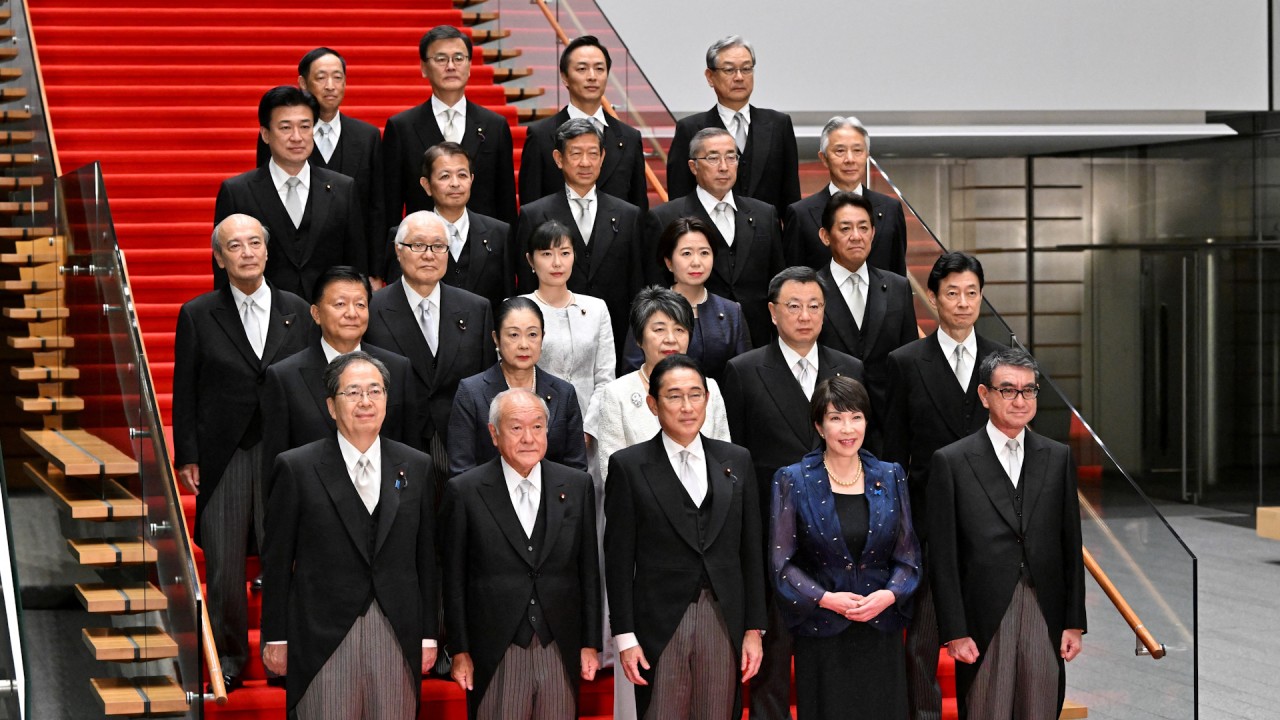
Japan must appoint at least 5 women ministers in future cabinets to lock in ‘progress’, advocates say
- Former PM Junichiro Koizumi 20 years ago targeted a Cabinet with 30% women but the current administration still falls short
- There remains a deeply held belief in Japan’s conservative heartlands that women should be home with the children and supporting their husbands
Critics also said that it remains well short of the 30 per cent of women in the cabinet that former prime minister Junichiro Koizumi set as a target two decades ago, which the present administration continues to adopt.
“It is true that in Japan’s political world, the percentage of women is still very low,” said Tsumie Yamaguchi, an executive of the Tokyo-based advocacy group Women in a New World Network.
“Koizumi had five women in one of his cabinets and he was the first to promote more female ministers, but even now we have still not broken through the 25 per cent level in a cabinet,” she said.

There are other statistics that lay bare just how male-centric Japanese politics remains. With just 10.4 per cent of female politicians, Japan ranked 166 of the 187 nations on the Inter-Parliamentary Union’s list of women in government, behind Syria, Libya and the Central African Republic.
And while there have been dozens of female prime ministers and presidents around the world, Japan is still a long way from that particular milestone.
Yet Yamaguchi is not completely disheartened at so few women appearing alongside Kishida in the traditional formal photo taken to mark the announcement of a new cabinet in Japan.
“We have to think of this as progress,” she said. “But next time, I would like to see women accounting for, say, 28 per cent of the cabinet and then we must meet the 30 per cent target.”
From now on, five should be the absolute minimum number of women in any future cabinet
Renge Jibu, an associate professor specialising in gender and media studies at the Tokyo Institute of Technology, is similarly sanguine, saying “a record is a record”.
“Five is an accomplishment and we must not overlook that, but clearly there is room for improvement and I believe that from now on, five should be the absolute minimum number of women in any future cabinet,” she said.
Rising to the highest echelons of Japanese politics is an extremely tricky task, Jibu said, with many capable men and women all vying for a portfolio, a higher profile, and possibly, even a shot at the top job.
Politicians whose fathers and grandfathers were previously members of the Diet are still common in Japan and are often automatically adopted as the candidate for a safe constituency as soon as they begin a career in politics.
Too few women have challenged that “accepted wisdom” and simply accepted their allotted roles in society, including in the workplace.

And while Jibu is pleased to see more women in the cabinet this time, she does take issue with the portfolios that most of them have been given.
Ayuko Kato is minister in charge of policies related to children and women’s empowerment, Shinako Tsuchiya is overseeing reconstruction, Hanako Jimi is minister for regional revitalisation, while Sanae Takaichi has retained her post as minister for economic security.
“I would have liked to see more women in the top roles, such as minister for economy, trade and industry, but I am very glad to see Yoko Kamikawa as the new foreign minister,” Jibu said.
“She was very good as justice minister previously so I am very hopeful that she will be successful in this new role as that is what is needed to give women more opportunities,” she added.
In Japan’s push for women bosses, equality is a secondary concern
Announcing his new cabinet, Kishida said it was made up of politicians “that can use change to their advantage” and that he intended to take advantage of those skills to “break through stagnation and build a nation where everyone can feel that tomorrow will be better than today”.
It is notable, however, that Kishida replaced the former minister for children and gender issues, Masanobu Ogura, with Ayuko Kubo. Having a man overseeing gender matters was widely derided in June when he chaired the G7 ministerial meeting on equality and women’s empowerment and was photographed with his counterparts – all of whom were women.


